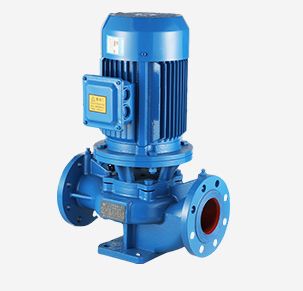English
- Afrikaans
- Albanian
- Amharic
- Arabic
- Armenian
- Azerbaijani
- Basque
- Belarusian
- Bengali
- Bosnian
- Bulgarian
- Catalan
- Cebuano
- Corsican
- Croatian
- Czech
- Danish
- Dutch
- English
- Esperanto
- Estonian
- Finnish
- French
- Frisian
- Galician
- Georgian
- German
- Greek
- Gujarati
- Haitian Creole
- hausa
- hawaiian
- Hebrew
- Hindi
- Miao
- Hungarian
- Icelandic
- igbo
- Indonesian
- irish
- Italian
- Japanese
- Javanese
- Kannada
- kazakh
- Khmer
- Rwandese
- Korean
- Kurdish
- Kyrgyz
- Lao
- Latin
- Latvian
- Lithuanian
- Luxembourgish
- Macedonian
- Malgashi
- Malay
- Malayalam
- Maltese
- Maori
- Marathi
- Mongolian
- Myanmar
- Nepali
- Norwegian
- Norwegian
- Occitan
- Pashto
- Persian
- Polish
- Portuguese
- Punjabi
- Romanian
- Russian
- Samoan
- Scottish Gaelic
- Serbian
- Sesotho
- Shona
- Sindhi
- Sinhala
- Slovak
- Slovenian
- Somali
- Spanish
- Sundanese
- Swahili
- Swedish
- Tagalog
- Tajik
- Tamil
- Tatar
- Telugu
- Thai
- Turkish
- Turkmen
- Ukrainian
- Urdu
- Uighur
- Uzbek
- Vietnamese
- Welsh
- Bantu
- Yiddish
- Yoruba
- Zulu
Telephone: +86 13120555503
Email: frank@cypump.com
Dec . 12, 2024 09:48 Back to list
slurry pump specification
Understanding Slurry Pump Specifications
Slurry pumps play a crucial role in various industrial applications, especially in sectors such as mining, construction, and wastewater treatment. These specialized pumps are designed to transport mixtures of liquid and solid materials, which can be abrasive, viscous, or corrosive in nature. Understanding the specifications of slurry pumps is essential for selecting the right pump for a particular application and ensuring optimal performance.
Key Specifications of Slurry Pumps
1. Flow Rate One of the primary specifications to consider is the pump's flow rate, typically measured in liters per second (L/s) or gallons per minute (GPM). The flow rate indicates how much slurry the pump can handle within a given timeframe. Selecting a pump with the appropriate flow rate is critical to meeting the operational needs of the system.
2. Head (Pressure) The head or pressure capability of a slurry pump is another important specification. It is measured in meters (m) or feet (ft) and defines how high the pump can lift the slurry. The required head is influenced by several factors, including the distance the slurry needs to be transported and the elevation difference between the source and the destination.
3. Slurry Density The density of the slurry mixture being pumped affects the selection of the pump. Slurry density is usually expressed in kilograms per cubic meter (kg/m³) or pounds per gallon (lb/gal). Pumps must be able to handle the specific density of the slurry to avoid operational issues and ensure efficiency.
4. Particle Size The size and shape of the particles in the slurry are critical factors. Slurry pumps have a maximum allowable particle size, which dictates the pump's suitability for various applications. Pumps designed for heavy-duty applications can handle larger particles and more abrasive materials, while those for lighter slurries may not have the same capacity.
5. Material Construction The materials used in the construction of the pump are crucial, especially when dealing with corrosive or abrasive slurries. Common materials include metals such as cast iron, stainless steel, and various alloys, while some applications might require rubber lining or polymers to provide additional resistance to wear and corrosion.
slurry pump specification

6. Pump Type There are several types of slurry pumps, including centrifugal and positive displacement pumps. Centrifugal pumps are the most common, utilizing rotational energy to move the slurry, while positive displacement pumps are effective for handling high-viscosity slurries. The choice between these types depends on the specific requirements of the application.
Additional Considerations
1. Efficiency and Power Consumption The efficiency of a slurry pump can significantly affect operational costs. It is essential to consider the power consumption of the pump to ensure it meets energy efficiency standards and reduces overall operational expenses.
2. Maintenance Requirements Regular maintenance is necessary to ensure the reliability and longevity of slurry pumps. Selecting a pump that is easy to maintain will result in reduced downtime and operational interruptions. Manufacturers often provide guidelines on maintenance schedules and practices.
3. Sealing System Due to the nature of slurry pumping, effective sealing systems are vital to prevent leaks and contamination. Different sealing technologies, such as mechanical seals or packing, should be evaluated based on the specific application's demands.
Conclusion
Choosing the right slurry pump requires a comprehensive understanding of its specifications, including flow rate, head, slurry density, particle size, material construction, and pump type. Each application presents unique challenges, and careful consideration of these factors ensures optimal performance and efficiency in transporting slurry materials. Additionally, factors such as maintenance requirements, efficiency, and sealing systems should not be overlooked. By paying attention to these specifications, industries can achieve better results and enhance productivity in their operations.
-
ISG Series Vertical Pipeline Pump - Chi Yuan Pumps Co., LTD.
NewsJul.30,2025
-
ISG Series Vertical Pipeline Pump - Chi Yuan Pumps Co., LTD.|energy-efficient fluid handling&industrial durability
NewsJul.30,2025
-
ISG Series Vertical Pipeline Pump - Chi Yuan Pumps | Advanced Engineering&Industrial Efficiency
NewsJul.30,2025
-
ISG Series Pipeline Pump - Chi Yuan Pumps | High Efficiency, Energy Saving
NewsJul.30,2025
-
ISG Series Vertical Pipeline Pump-Chi Yuan Pumps|High Efficiency&Reliable Performance
NewsJul.29,2025
-
ISG Series Vertical Pipeline Pump|High Efficiency&Low Noise
NewsJul.29,2025










